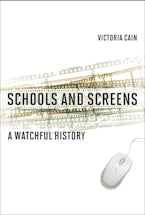The Development of Technical Education in France traces the evolution of technical instruction in French schools through almost four centuries. Clear and concise, this narrative of the development of scientific and technical education is important not only as a vital chapter in the history of French civilization but also as the first comprehensive book on the basic historical background of modern technical education.
The earliest traces of what would now be called technological training can be found in the utopian dreams of Rabelais, Montaigne, and others, and in the educational systems evolved by the Jesuits, Oratorians, and the Frères des éecoles chrétiennes, largely under the influence of Descartes. In the seventeenth century the needs of manufactories and mercantilists made themselves felt, and under the guidance of Savary and Colbert brought about the establishment of a number of Royal Academies for the instruction of youths in the arts of road building, bridge construction, architecture, and commerce. Military training began to include mathematics, physics, the use of machinery, and naval science.
During the Age of Enlightenment, 1700-1789, practical education was extended to the indigent, and primary and secondary schools were established to prepare young men for useful service to the state and to trade. Rousseau was one of the prime movers in perfecting practical training to book learning. The idea of teaching children through direct contact with equipment and processes steadily gained foothold during this period.
The social upheaval brought about by the French Revolution also wrought fundamental changes in educational philosophy, even though some of these changes were of a temporary nature. Beginning with proposals by Mirabeau and Talleyrand, state and regional school systems were established throughout France in order to train citizens for life in a Liberal state. The Université de France, established in 1806-1808, was intended to regulate education, from primary school through the university level, in the entire country. The écoles des arts et métiers filled the need for practical instruction and in many respects laid the groundwork for modern technological education, as did the École polytechnique. The latter attracted attention from leading scientists and educators of the German and Italian states, as well as from England, Russia, Poland, Sweden, and the United States. Crozet, who fled to the United States, brought its methods to West Point. There Thayer enlarged upon his methods after he had gone to the Virginia Military Institute. At the same time, Green introduced the same ideas at Rensselaer Polytechnic Institute.
Education under the Constitutional Monarchy, 1814-1848, was characterized by the resurgence of church influence, which had been suppressed under the Revolution. Still under the guidance of a number of philanthropists, prominent among whom was La Rochefoucauld-Liancourt, a system of state supported schools took shape, forming the basis for much of present-day school systems not only in France but in other countries as well. However, conflict with the church was inevitable and at times bitter. The fact that humanities were often neglected in the École polytechnique and similar institutions led to a widespread belief, probably not unjustified, that these schools were a hotbed of Liberalism and anticlericalism. Saint-Simon and his followers exerted a profound influence on both faculties and student bodies. The officers' military training school at Saint-Cyr, founded during the Revolution, became known as the outstanding institution of its kind and continues to be so to this present day. Yet by 1850, France's period of leadership drew to a close as her rate of industrial leadership fell behind that of Great Britain and of Germany, and her technical by the Swiss Polytechnic School and later by the rapidly advancing schools of Germany and the United States.












